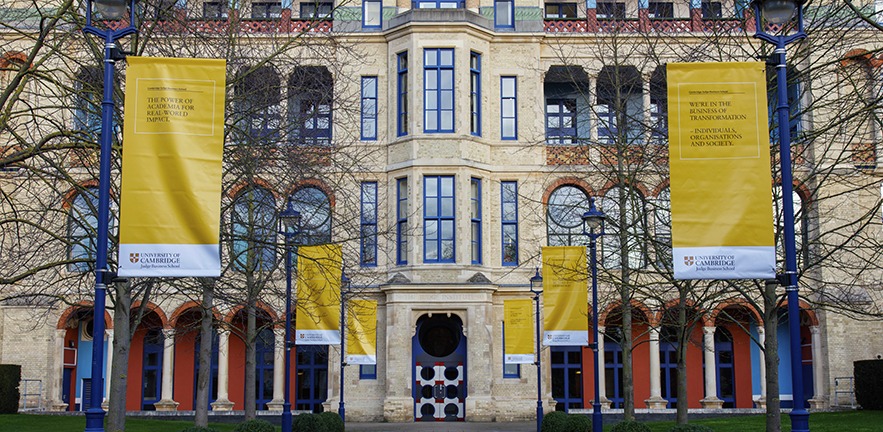The United Nations has published a policy report from the Circular Economy Centre at Cambridge Judge Business School on how digital solutions can be leveraged to advance circular economy principles.
The 58-page report published by the UN Economic Commission for Europe (UNECE), which aims to help policy makers make progress on the UN’s Sustainable Development Goals, is authored by Khaled Soufani and Samsurin Welch of the Circular Economy Centre.
Khal is Management Practice Professor of Financial Economics and Policy at Cambridge Judge, Director of the Circular Economy Centre and Director of the Executive MBA programme at the Business School; Samsurin is a PhD graduate of Cambridge Judge (PhD 2017), a Research Associate at the Circular Economy Centre, and a Senior Associate at the Cambridge Institute for Sustainability Leadership.


How the circular economy can help in reducing waste
“Climate change, environmental degradation, and the overconsumption of natural resources are some of the greatest challenges facing the world today,” says the report. “Following current linear economy models, global resource consumption is set to double by 2050 (from 2015 levels), and waste production is predicted to grow by 70%.
“The circular economy offers a paradigm shift, decoupling socioeconomic growth from resource consumption by minimising waste and pollution, maximising the circulation of products and materials, and regenerating nature. The transition towards a circular economy requires closed-loop flows of information across stakeholders in the value chain. Policy makers and engaged stakeholders will need to join hands in addressing information flow barriers.”
Better ways to share information for a circular economy
Current barriers to such information flow are categorised into 5 challenges:
- knowledge
- valuation
- communication, coordination and trust
- access, reach and inclusion
- institutions and governance
“Digitalisation offers a solution to these challenges and has enormous potential to help scale up circular economy models,” says the report. “It entails leveraging the transformative power of new technologies to develop new value propositions that would previously have been unviable. By allowing for the large-scale collection, management and processing of data, digital tools can generate actionable insights, inform decision-making, and automate or semi-automate action across value chains.”
Opportunities and risks in new technologies
In a Preface to the report, Elisabeth Türk, Director, Economic Cooperation and Trade, UNECE, says:
“Digital technologies can help promote the dematerialisation of government and business processes, track the environmental impact of products, and enable consumers and suppliers greater opportunities to make informed choices for circular transition, among others. At the same time, new technologies also bring new risks with regards to such issues as the reliability of data, privacy, and cybersecurity. Moreover, in developing countries and countries with economies in transition, financing the digital and circular transition can be a challenge.
“I hope this publication will help policy makers in the region to harness the power of digital solutions for the circular transition, build economic prosperity and resilience, and achieve progress in the attainment of the Sustainable Development Goals (SDGs), particularly SDG 12 on responsible consumption and production.”
Featured research
Soufani, K. and Welch, S. (2024) Leveraging digital solutions for the circular economy. Geneva: United Nations Economic Commission for Europe (UNECE)





